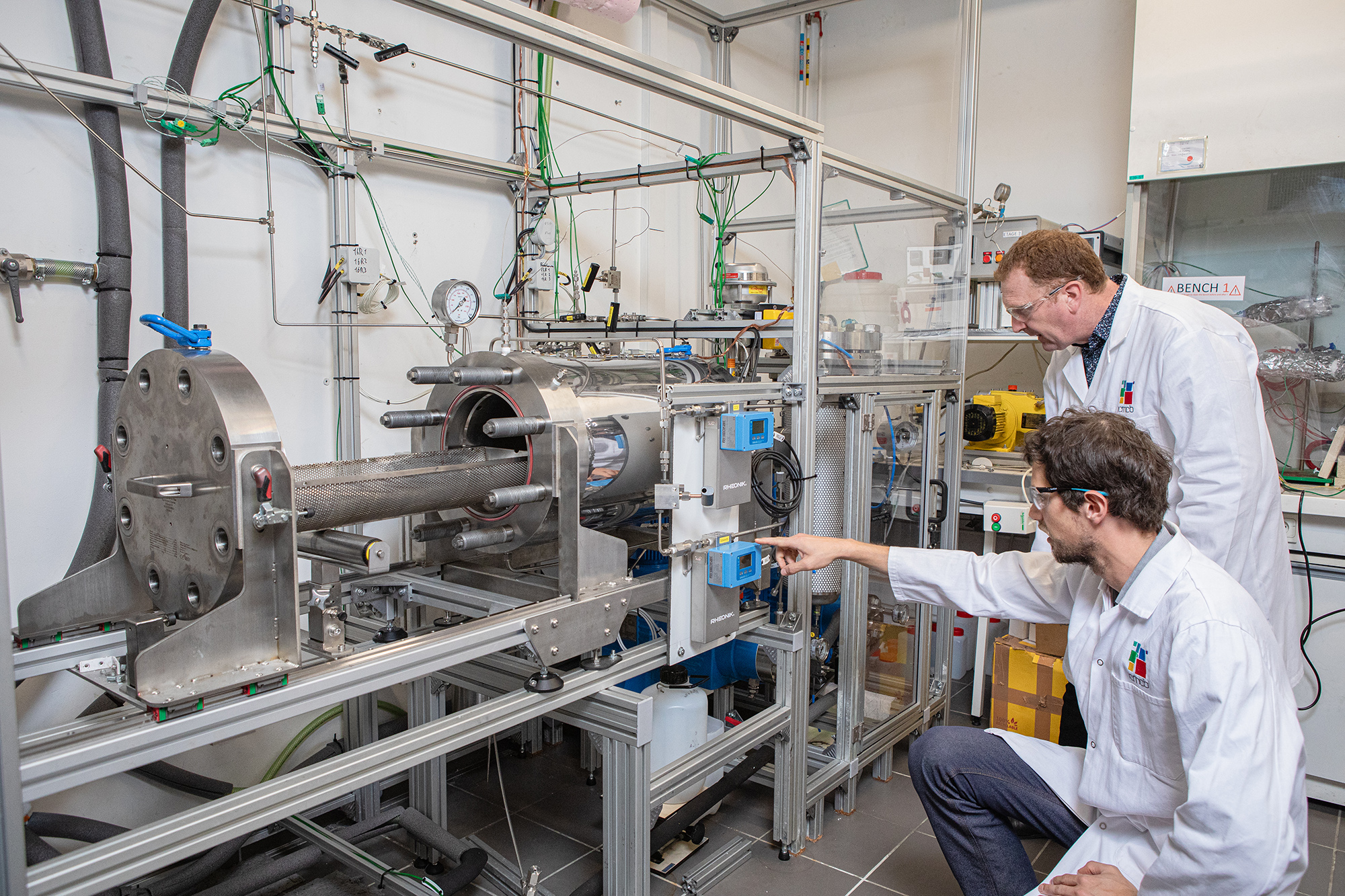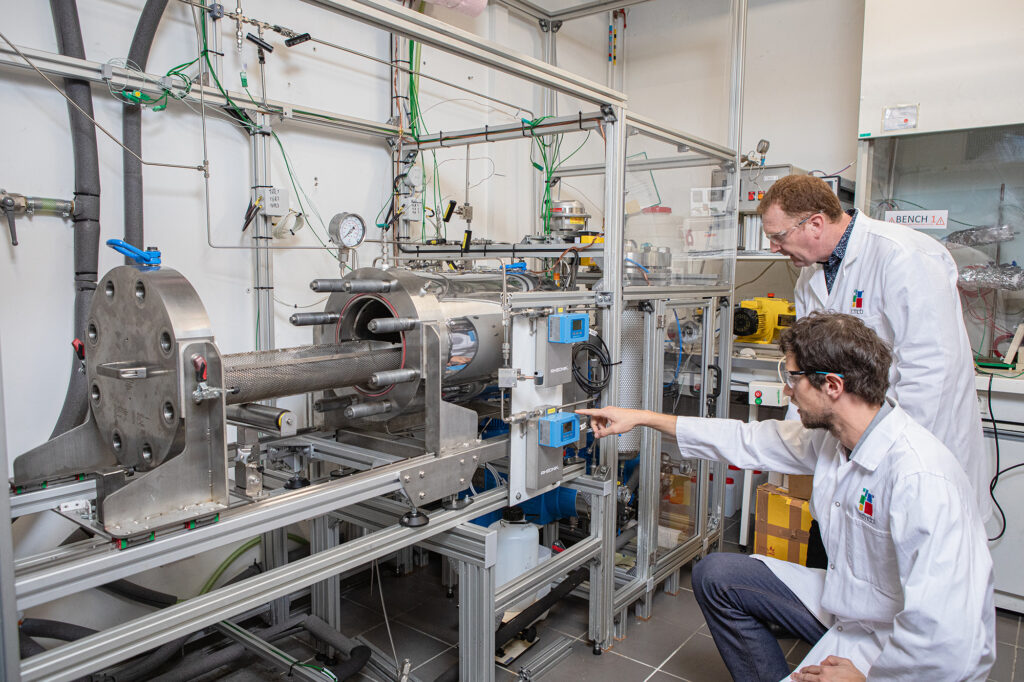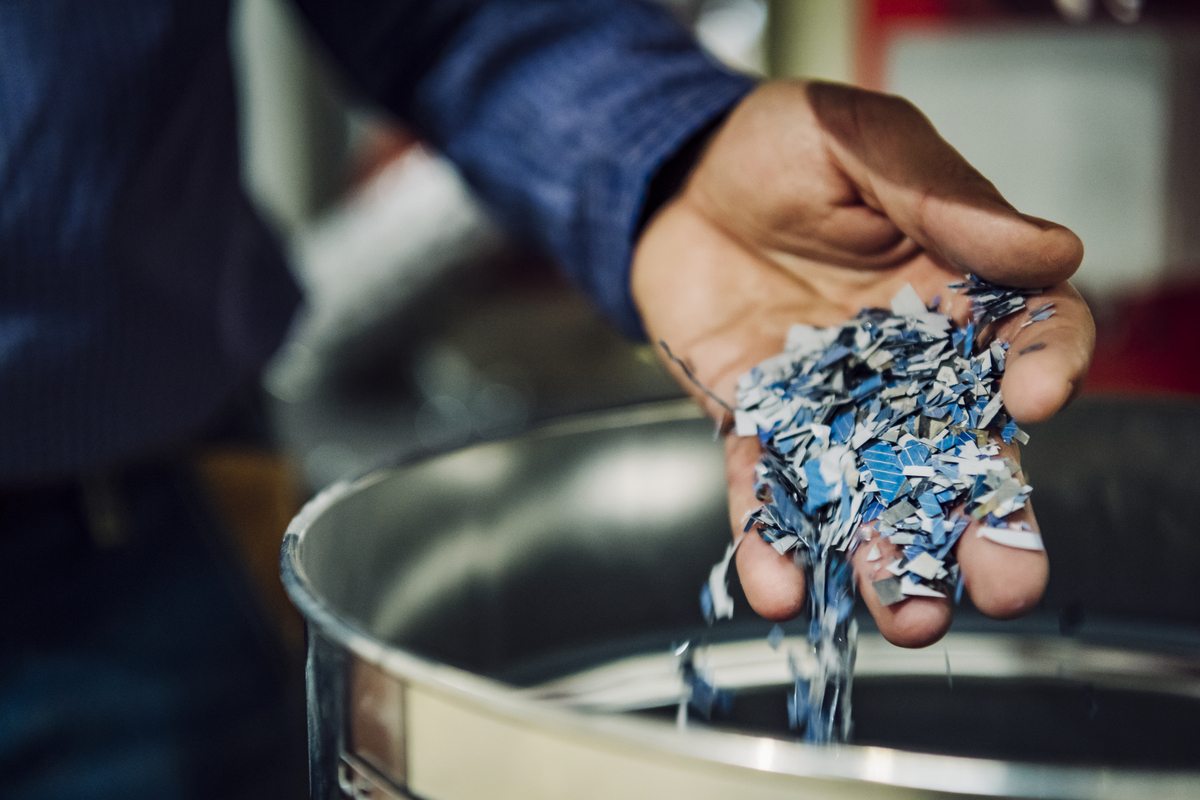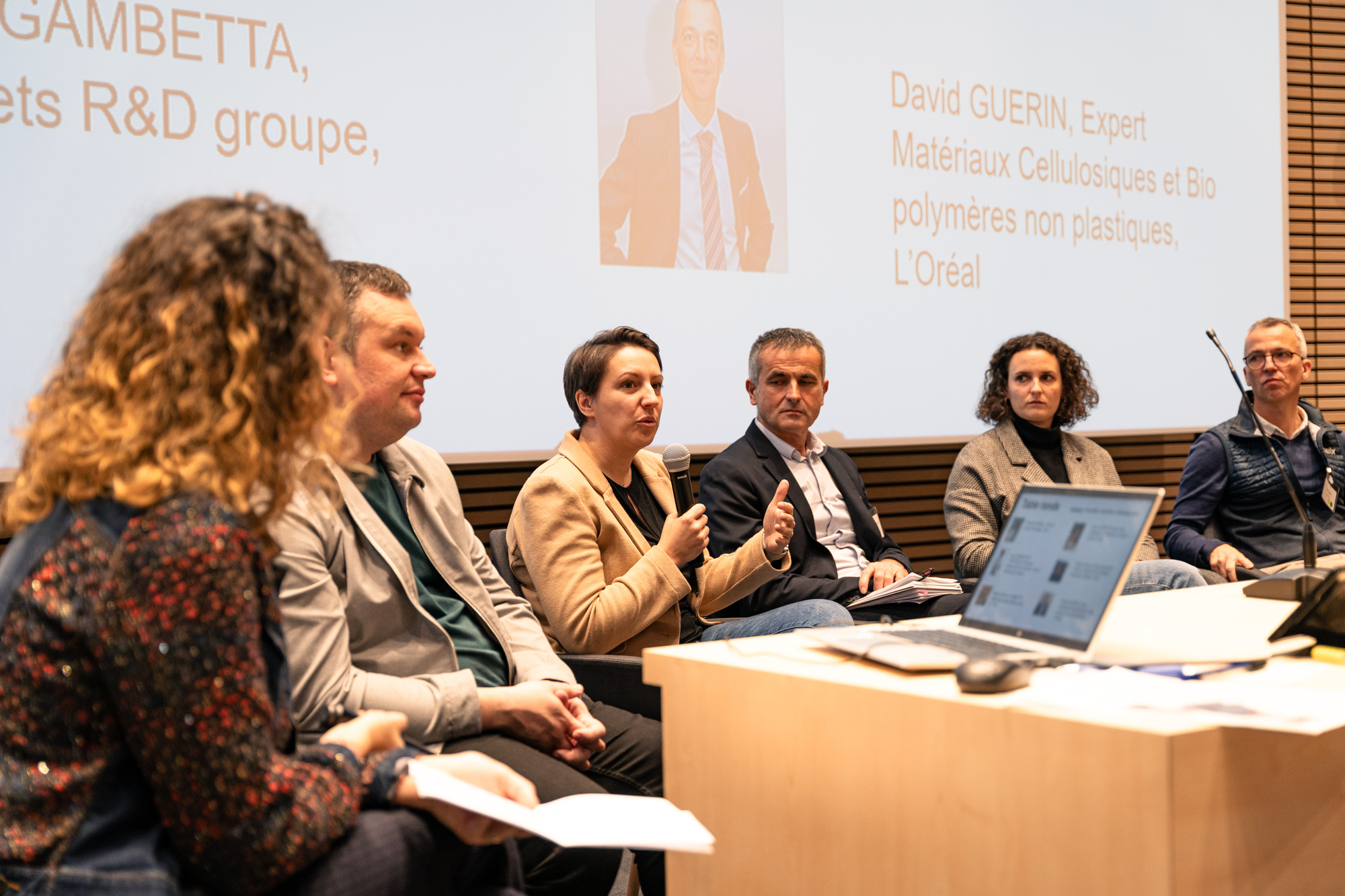
Supercritical fluids
expert
As a CNRS research director and director of the ICMCB (CNRS/Univ. Bordeaux/Bordeaux INP), Cyril Aymonier has built up remarkable expertise in the use of supercritical fluids over the years. These fluids can be used, among other things, to break down composite materials, which are notoriously difficult to recycle. This work is part of the PEPR program, specifically the area dedicated to the recycling of composite materials.
By Martin Koppe
From his thesis to winning two CNRS medals, Cyril Aymonier has been working on the synthesis, shaping, and recycling of materials in supercritical fluid environments. This research director is a world-renowned specialist in chemistry in these environments, which he studied at the Institute of Condensed Matter Chemistry in Bordeaux, a laboratory he now heads. At the time, he was working on their use in oxidation processes for the treatment of hazardous aqueous effluents, a technology invented at MIT (United States). After two years of postdoctoral research in Germany, Cyril Aymonier joined the CNRS in 2002 and became interested in the synthesis of materials in supercritical fluid environments.
The researcher then considered the opposite reasoning with regard to composite materials. Made from fibers embedded in a polymer matrix, these materials combine strength and lightness and have been very successful in the automotive and aerospace industries. Their cohesion means that they are extremely difficult to break down at the end of their life cycle.
“My interest in recycling composite materials began in 2009, when I was approached by Airbus and Safran following my work on the hydrolysis of epoxy matrices, explains Cyril Aymonier. So we worked together on recycling carbon fiber-based composite materials. This project was extraordinary in both form and content. At the time, laboratories were still not very interested in recycling, but the industrial partners were particularly motivated. This led me to reflect and add recycling to my research activities, an area that has grown significantly since then.”
Today, materials are no longer manufactured without considering their end of life and recycling, or even their recyclability.
The wide range of applications for supercritical fluids is clearly illustrated by the fifty or so patents filed by Cyril Aymonier during his career, many of which were the result of collaborations with industrial partners. This avalanche of original results earned the researcher both the bronze medal and the innovation medal from the CNRS.
Cyril Aymonier is also behind the creation of the startup IDELAM, which specializes in recycling complex materials.
The use of supercritical fluids for recycling composite materials involves solvolysis reactions: it is the solvent that breaks the chemical bonds that hold the composite material together. “Solvolysis also occurs at low temperatures, but this creates problems in recycling the organic solvent used, explains Cyril Aymonier. This issue disappears under supercritical conditions, as water can be used as the reaction medium. It allows the polymer matrix to be hydrolyzed in a solvent that behaves like hexane.”

Supercritical fluids?
When subjected to temperature and pressure conditions above certain values, which vary for each compound, solvents behave in a manner intermediate between gas and liquid: these are known as supercritical fluids. These unconventional conditions radically alter some of their properties.
For example, contrary to its normal behavior, water heated to over 374°C and 221 bar solubilizes oils but can no longer dissolve salts.
Water does even better, dissolving organic matrices in a matter of minutes, whereas traditional processes take several hours. Other solvents, such as ethanol, can also be used to break down materials. Precise control of pressure and temperature parameters allows solvents other than water to be brought to supercritical conditions.
Cyril Aymonier’s approach first found success in compounds used in aeronautics, a field that is particularly hungry for advanced composite materials. The researcher has since broadened his horizons to renewable energies and is interested, for example, in recycling wind turbine blades and hydrogen tanks.
“Composite materials have a wide range of applications; in particular, they reduce the environmental impact of cars and planes by making them lighter,” explains Cyril Aymonier. “But their main limitation lies in their recyclability. Once broken down, outlets must be found for these recycled raw materials. ” For example, the researcher is working on removing carbon fibers from the matrix without damaging them, in order to maximize the possibilities for giving them a second life. The problem also arises for glass fibers, which are more fragile.
We are fortunate to have an extraordinary consortium to address all these challenges.
This work naturally led Cyril Aymonier to become involved in the PEPR Recycling program dedicated to composite materials (Recycomp project), co-led by Cyril Aymonier and Isabelle Capron, Director of Research at INRAE. Nine laboratories are involved, each with its own expertise, in order to develop composite materials that are easier to recycle, characterize the products after solvolysis, and reuse them in new materials. More fundamental work, for example on the interfaces between fibers and their matrix, is also being carried out.
“We have an extraordinary consortium to address all these challenges, says Cyril Aymonier. Recycomp wants to bring composite materials into a circular economy where each ingredient is recycled into materials that are in turn more easily recyclable.”
Innovation Medal
On December 12, 2024, Cyril Aymonier received the CNRS Innovation Medal for his work on supercritical fluids.
This distinction honors women and men whose exceptional research has led to significant innovation, promoting French scientific research.

More news


